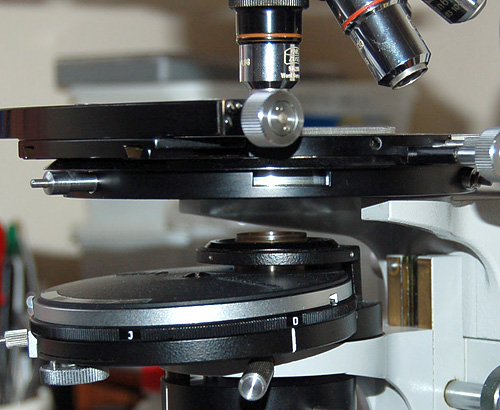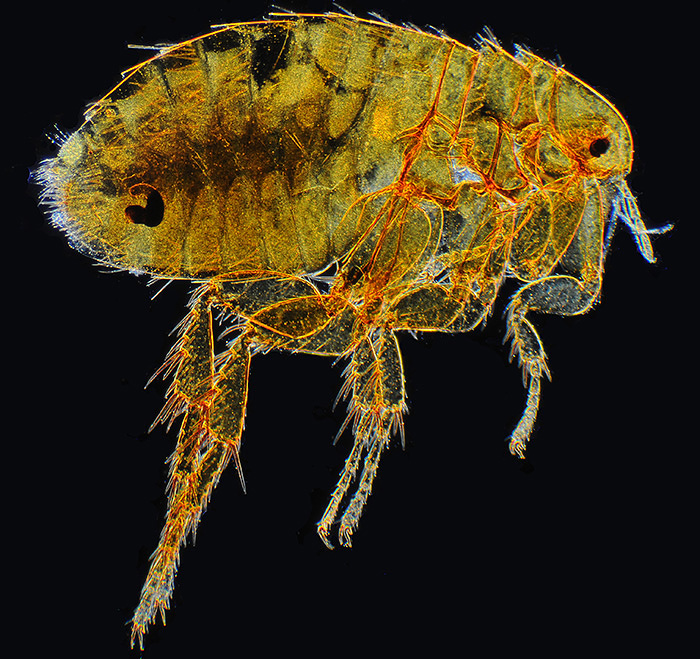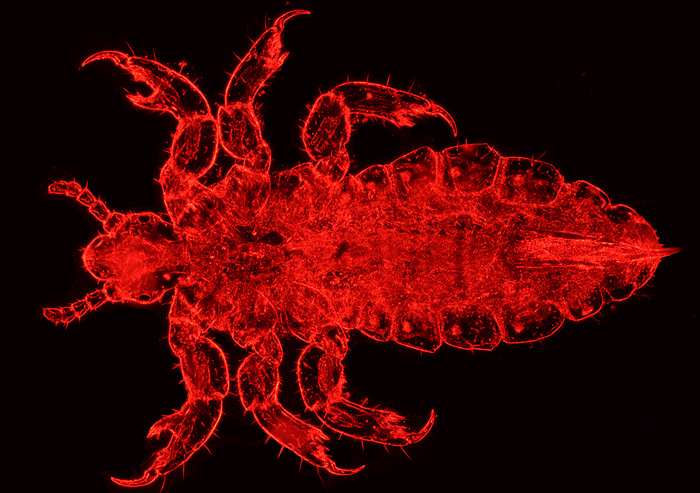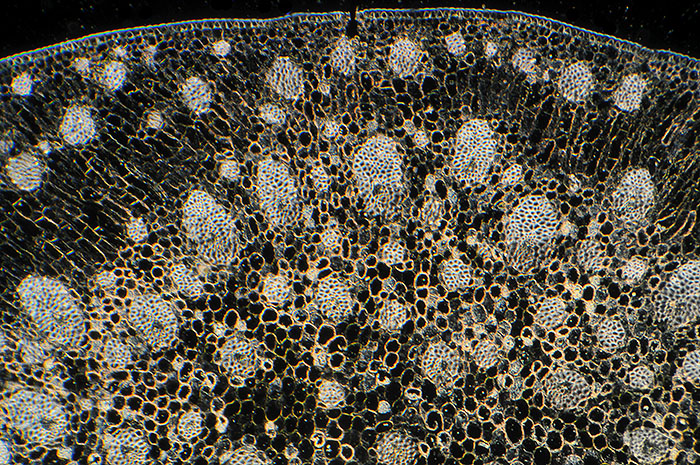
The Zeiss phase condenser (46 52 77) on a Photomicroscope III. The 'D' setting is set with top element off.
The condenser focus is set for the brightfield 'J' setting which also seems to suit low power darkfield.
|
Topical
tip - low power darkfield on a Zeiss microscope.
by David Walker,
UK |
Low power darkfield with 2.5x to 6x objectives can be a useful technique for certain subjects. The popular Zeiss stands with 160 mm tube length are often fitted with a phase condenser (Zeiss part 46 52 77 or similar) with removable top element and a darkfield 'D' setting. Zeiss note that this setting is intended for darkfield with condenser top element immersed for objectives of NA 0.6 - 1.0 (ref. 1) .
I'm not sure if it's intentional or coincidental, but the 'D' setting can also give effective darkfield for the low power objectives with the top condenser element off (when using low power objectives to give an NA 0.32 condenser). The lower accessory condenser lens remains swung in and the condenser is focussed in the normal way to sharply image the field iris in the field of view. Just shifting to the 'D' setting gives darkfield with a good black background across the whole field at normal light levels (on the author's Zeiss stand at least). Some artifacts in the black background are seen at higher light levels that wouldn't normally be used for visual work. For photography, the limited dynamic range of a typical camera doesn't seem to show them.
The darkfield seems to be effective without refocussing the condenser for the Zeiss 2.5x planachro, 4x planapo and 6.3x planachro. Zeiss 10x objectives tried give an annular oblique lighting with the 'D' setting (top element off) which may be of use for some subjects.
The images below were taken using this procedure and a Nikon DSLR. The images are out of camera apart from resize with a little sharpening and the clean up of bright specks in the background, as even the cleanest prepared slide will invariably show some debris in darkfield.
If the condenser mentioned isn't fitted, it can be useful just experimenting with the condenser phase settings with various objectives; annular oblique or a reasonable darkfield may be possible.
To date I haven't been able to achieve comparable low power darkfield by using dark stops of various sizes in the filter tray below a phase or Abbe condenser with or without the swing in lower accessory lens. Perhaps the 'D' setting stop is in a particularly favourable optical plane for low power darkfield. I'd be interested in hearing from Zeiss stand users who have found a filter tray stop technique or other technique for very low power darkfield.
Comments to the author David Walker are welcomed.
Reference.
1) Zeiss 'Optical systems for the Microscope', page 91. Undated; an invaluable
document on Zeiss 160 mm microscope optics. (Available to download as 43 Mbyte
pdf file from Gordon Couger's science-info.net
website.)

The
Zeiss phase condenser (46 52 77) on a Photomicroscope III. The 'D' setting is
set with top element off.
The condenser focus is set for the brightfield
'J' setting which also seems to suit low power darkfield.

Oriental
rat
flea, Xenopsylla cheopsis, a vector of bubonic plague. Darkfield. Zeiss 2.5x planachro
objective.

Human louse, Victorian mount by Topping. Darkfield with a red filter. Zeiss 2.5x planachro objective.

Echinus (sea urchin) spine, darkfield with a blue filter. Unnamed Victorian mount. Zeiss 2.5x planachro objective. This was too wide for the objective field so two images were stitched. As the darkfield was so even, there was no problem merging the images; sometimes this is tricky to do seamlessly if there's slight tonality differences.

Live freshwater shrimp, Crangonyx pseudogracilis (?) from author's garden pond. Zeiss 2.5x planachro objective, red filter. The DSLR's ISO was set to 800 with a 1/400th sec exposure to freeze motion. The author's electronic flash beam splitter setup doesn't fit under the condenser when it's focussed for darkfield.

Coconut, T/S stem, Biosil slide. Zeiss 4x planapo, darkfield.
Published in the October 2008 edition of Micscape.
Please report any Web problems or offer general comments to the Micscape Editor .
Micscape is the on-line monthly magazine of the Microscopy UK web site at Microscopy-UK
© Onview.net Ltd, Microscopy-UK, and all contributors 1995
onwards. All rights reserved.
Main site is
at www.microscopy-uk.org.uk
with full mirror
at www.microscopy-uk.net
.